Info
Subfamily: Chloridoideae
Genus etymology: Diplachne = "double lobe" [Greek] refering to the two lobed lemmas
Species etymology: fusca = "dark" [Latin] refering to the lemmas; uninervia = "single vein" [Latin] refering to the glumes
Photosynthetic type: C4 (warm season)
Nativity: naturalized - intentional
First recorded in Hawaiʻi: 1955
Map
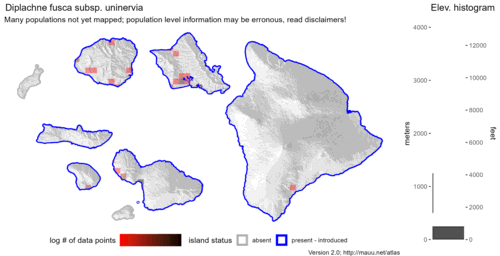
Inflorescence
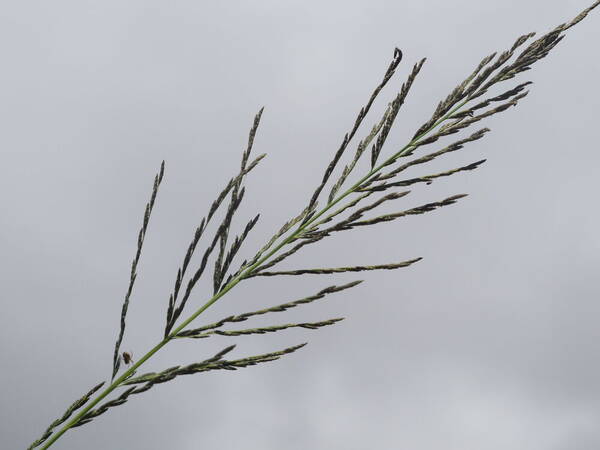
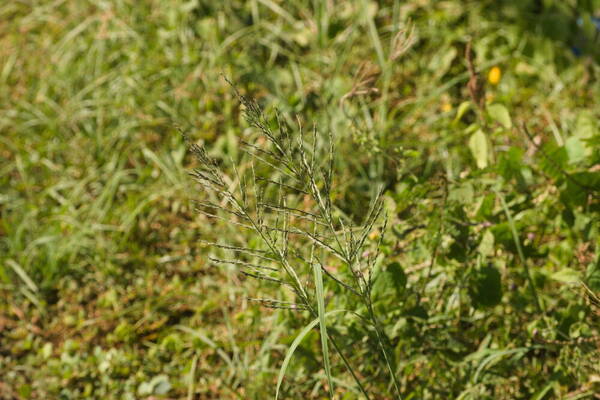
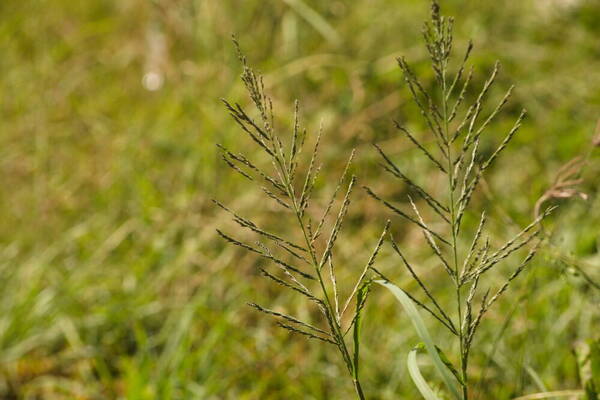
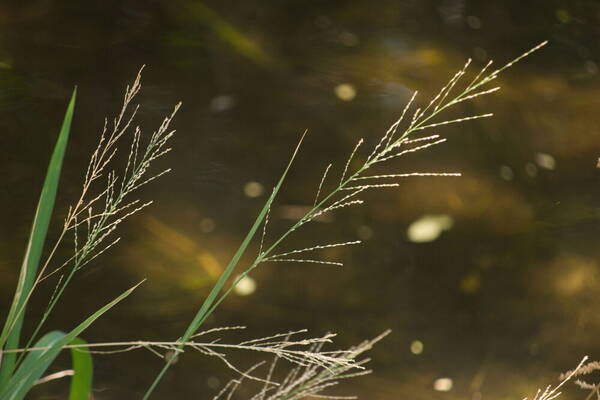
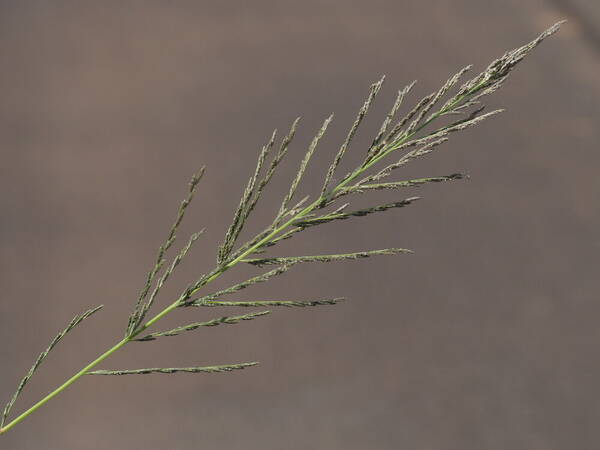
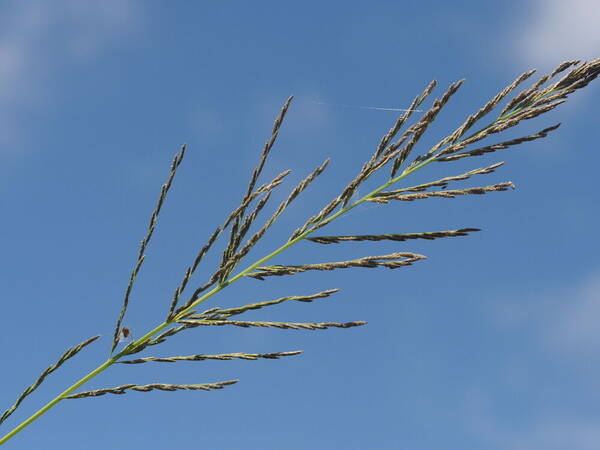
Plant
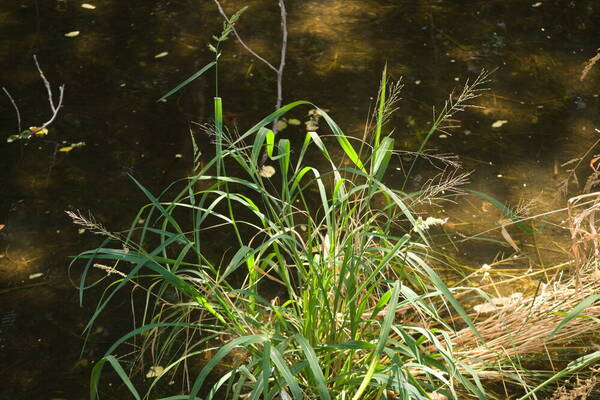
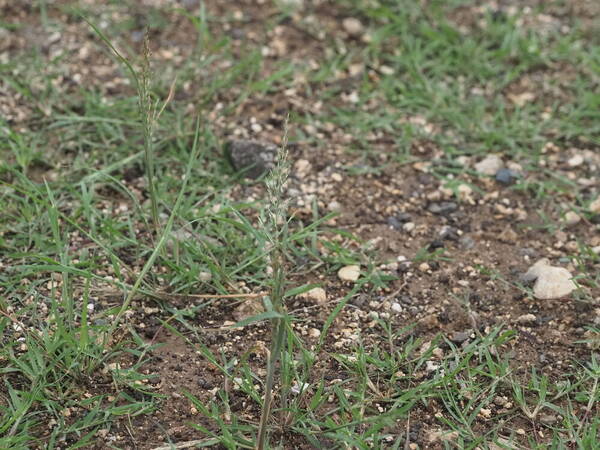
Habit
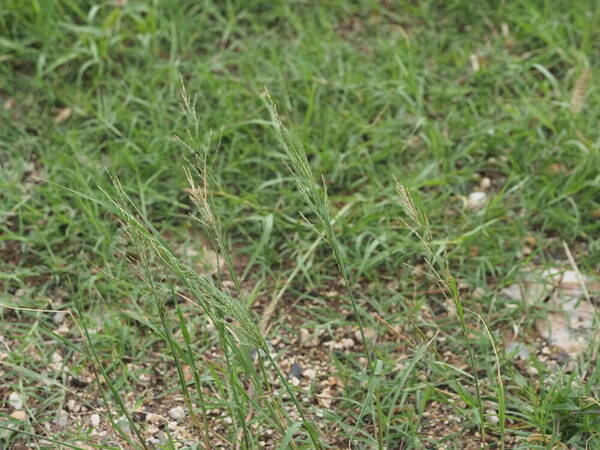
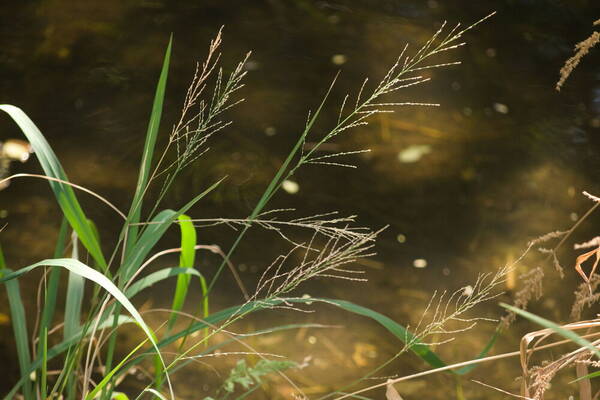
Spikelets
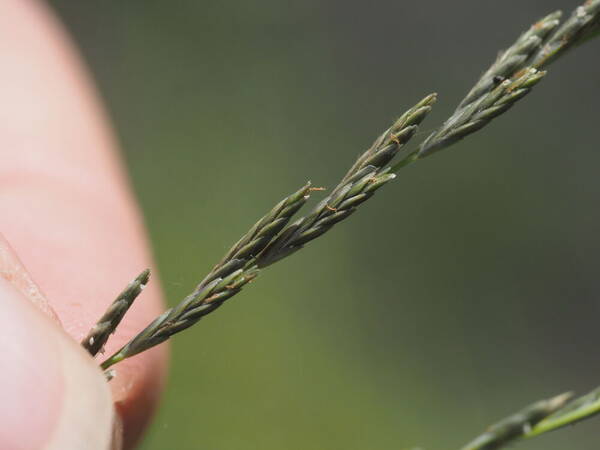
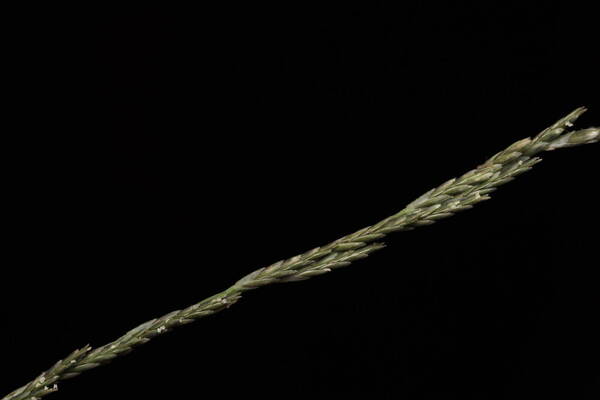
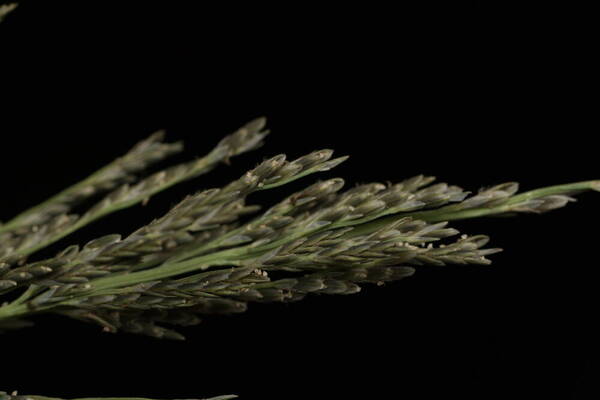
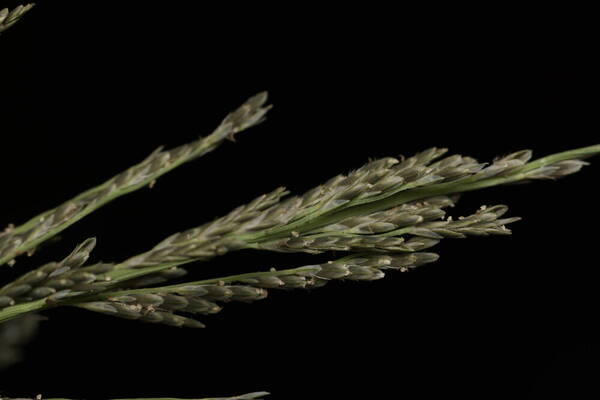
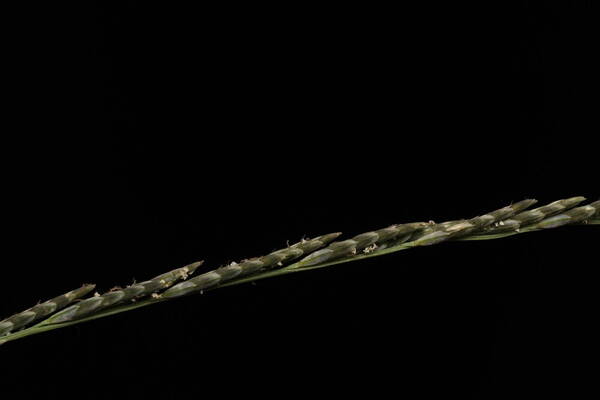


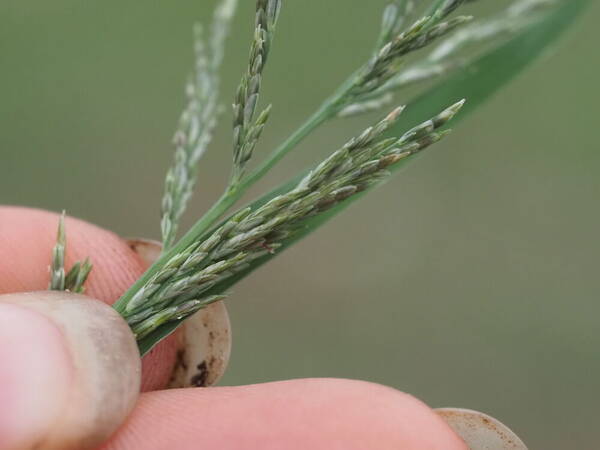
Description
Habit: Perennial. Culms decumbent; 60-150 cm long; rooting from lower nodes. Ligule an eciliate membrane; 3-8 mm long; acute. Leaf-blades flat, or convolute; 25-55 cm long; 3-5 mm wide; stiff; mid-green and grey-green. Leaf-blade midrib widened. Leaf-blade surface scabrous. Leaf-blade apex attenuate. Inflorescences: Inflorescence composed of racemes. Racemes 10-30; borne along a central axis; erect; straight; unilateral; 7-15 cm long. Central inflorescence axis 15-30 cm long. Rhachis semiterete. Spikelet packing broadside to rhachis; lax. Spikelets solitary. Fertile spikelets pedicelled, or sessile. Pedicels filiform; 0.5-1.5 mm long. Spikelets: Spikelets comprising 6-11 fertile florets; with diminished florets at the apex. Spikelets elliptic; laterally compressed; compressed slightly; 8-15 mm long; breaking up at maturity; disarticulating below each fertile floret. Rhachilla internodes eventually visible between lemmas. Floret callus evident; pubescent; obtuse; disarticulating obliquely. Fertile Spikelets: Spikelets comprising 6-11 fertile florets; with diminished florets at the apex. Spikelets elliptic; laterally compressed; compressed slightly; 8-15 mm long; breaking up at maturity; disarticulating below each fertile floret. Rhachilla internodes eventually visible between lemmas. Floret callus evident; pubescent; obtuse; disarticulating obliquely. Glumes: Glumes persistent; similar; shorter than spikelet. Lower glume lanceolate; 2.1-4.6 mm long; 0.6-0.7 length of upper glume; membranous; 1-keeled; 1 -veined. Lower glume primary vein scabrous. Lower glume lateral veins absent. Lower glume apex acute, or acuminate. Upper glume oblong; 3.3-7.4 mm long; 1-1.3 length of adjacent fertile lemma; membranous; 1-keeled; 1 -veined. Upper glume primary vein scabrous. Upper glume lateral veins absent. Upper glume apex obtuse, or acute; mucronate. Florets: Fertile lemma oblong; 3.2-5.9 mm long; membranous; dark green, or grey; without keel; 3 -veined. Lemma midvein ciliate; hairy below. Lemma lateral veins close to margins. Lemma margins pilose; hairy below. Lemma apex dentate; 2 -fid; mucronate, or awned; 1 -awned. Principal lemma awn from a sinus; 0.3-1.6 mm long overall. Palea 2 -veined. Palea keels scabrous. Palea surface pubescent; hairy on flanks. Apical sterile florets resembling fertile though underdeveloped. Flowers: Lodicules 2; cuneate; fleshy. Anthers 3; 0.2-2.7 mm long. Fruits: Caryopsis with adherent pericarp; ellipsoid; flattened; concavo-convex; 1.6-1.8 mm long. Distribution: Africa: north, west tropical, west-central tropical, northeast tropical, east tropical, southern tropical, south, and western Indian ocean. Asia-temperate: western Asia, Arabia, China, and eastern Asia. Asia-tropical: India, Indo-China, Malesia, and Papuasia. Australasia: Australia. Pacific: southwestern and north-central. North America: northwest USA, north-central USA, northeast USA, southwest USA, south-central USA, southeast USA, and Mexico. South America: Mesoamericana, Caribbean, northern South America, western South America, Brazil, and southern South America.
(Description source: Clayton, W.D., Vorontsova, M.S., Harman, K.T. and Williamson, H. (2006 onwards). GrassBase - The Online World Grass Flora. Available at https://powo.science.kew.org )
Annuals; culms tufted, decumbent or erect, 7.5-13 dm tall, branching above base. Sheaths chartaceous, only loosely clasping culms when older, persistent, glabrous, slightly scabrous, apex prolonged into auricles; ligule 1.5--2 mm long, membranous, truncate, margins entire but often frayed; blades linear, flat or involute, 6-45 cm long, 3-6 mm wide, slightly scabrous. Inflorescences paniculate, oblong to ovoid, 10-35 cm long, racemes numerous on an elongate axis, branches usually appressed to ascending, rarely spreading; spikelets appressed to the branches, 5-9-flowered, 3- 8 mm long, overlapping by 1/3 their length; glumes unequal, ovate to oblong, glabrous, distinctly 1-nerved, the nerve scabrous, apex truncate to acute, finely ciliate, mucronate, first glume 0.8-1.4 mm long, second glume 1.6-2 mm long, occasionally with lateral lobes; lemmas pale green, oblong, 2-2.5 mm long, 3-nerved, margins membranous and appressed-pilose, apex rounded to acute, finely fimbriate, + mucronate; palea pale green, elliptic to obovate, 2-2.5 mm long, 2-nerved, margins membranous and appressed-pilose, apex acute. Caryopsis pale brown, obovate, 1- 1.2 mm long, dorsally compressed. [2n = 20.]
(Description source: O’Connor, P.J. 1990. Poaceae, pp. 1481–1604. In: Wagner W.L., Herbst D.R. & Sohmer S.H. (eds.)., Manual of the flowering plant of Hawaiʻi. Vol. 2. University of Hawaii Press & Bishop Museum Press, Honolulu )